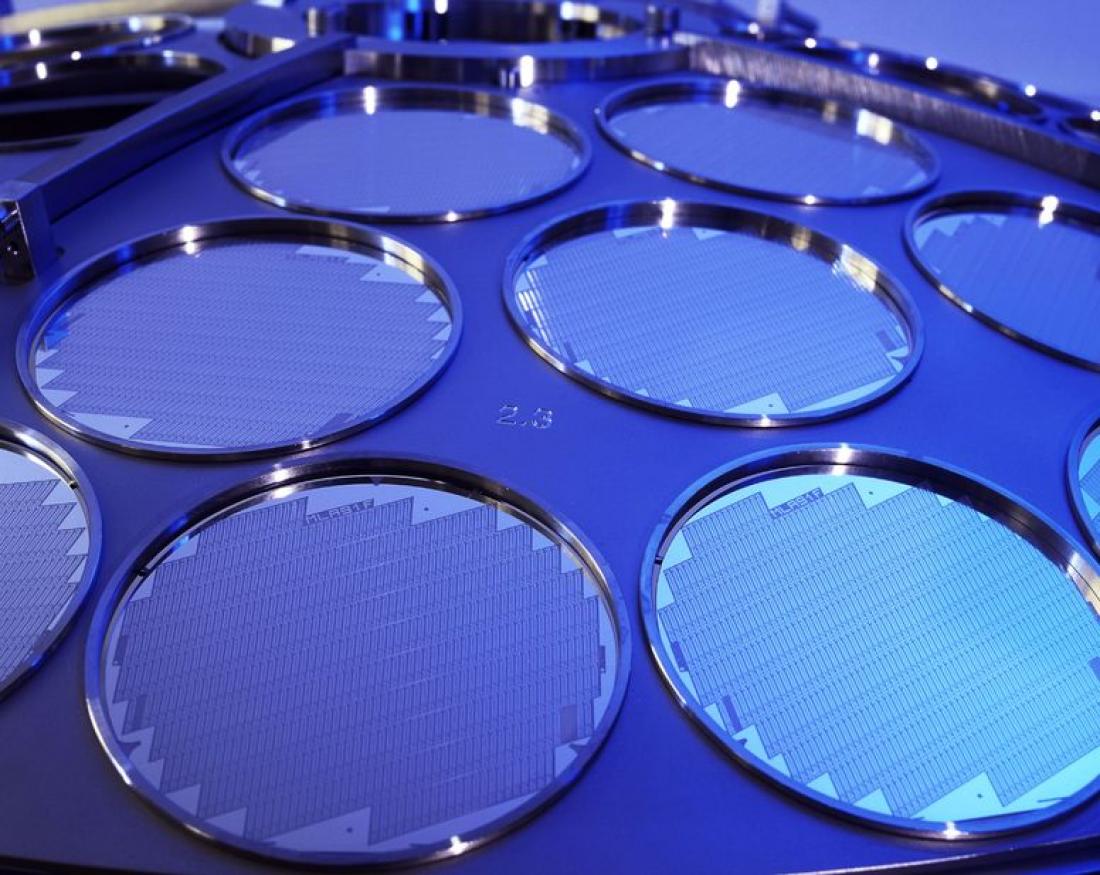Silicon wafer during production.
Electronic chips are built on small pieces of silicon that are cut from silicon sheets, called wafers, in a process known as dicing. Currently, dicing is performed by mechanical sawing or laser cutting, but these approaches can cause problems. Sawing can cause thin wafers to break or layers of silicon to separate. The heat generated by laser cutting can leave micro cracks in the silicon and produces molten debris. Coolants or protective coatings are then required, adding to the production cost.
A team of researchers at the A*STAR (Agency for Science, Technology and Research) Singapore Institute of Manufacturing Technology has developed a new technique that uses laser-induced thermal cracking technology. The silicon expands as a near-infrared laser heats it, then contracts as it cools, leading to stress that causes the silicon to break along the laser line. The result is a crackfree silicon chip with a smooth surface finish. The process creates no debris, cuts 10 to 20 times faster than currently used techniques, and increases productivity because more silicon pieces can be cut from one wafer. Together with the fact that the near-infrared laser is energy-efficient and consumes little power, these improvements over sawing
and laser cutting result in a dramatic improvement in efficiency.
According to the research team, the new dicing technology will advance the production of microchips for electronic devices. It will enable the production of chips that are thinner and capable of supporting higher processing speeds, making for smaller and more powerful devices.
For further information contact:
Dr Wang Zhongke
Singapore Institute of Manufacturing Technology
Agency for Science, Technology and Research,
Singapore
E-mail: [email protected]
*This article also appears in Asia Research News 2015 (p.56).



